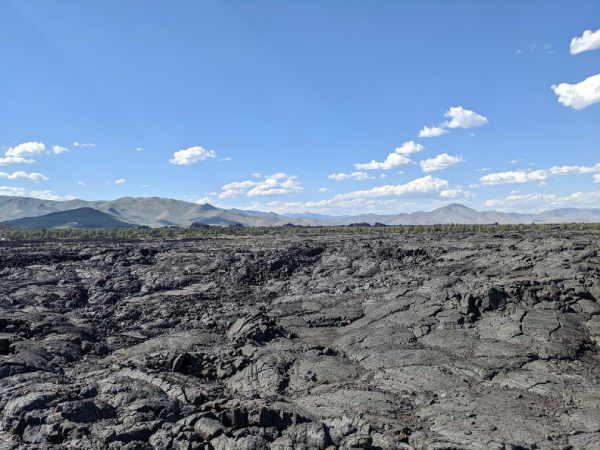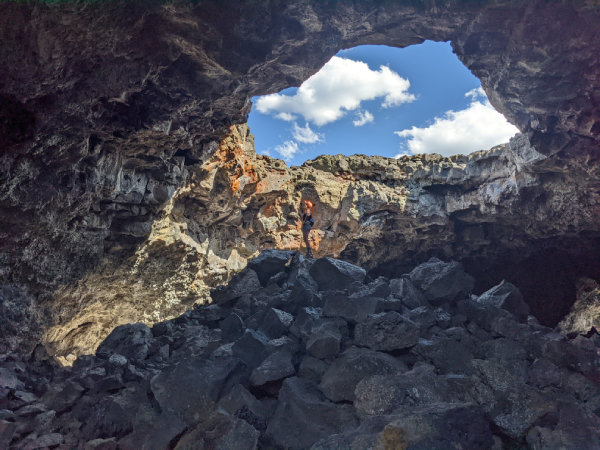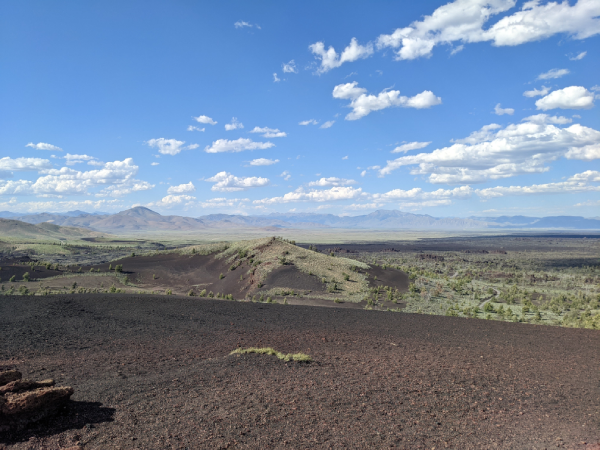We left the Stanley area early and made it into Ketchum for breakfast. Ketchum is a ski resort town and it reminds me a lot of Steamboat. There’s a lot of money here and if you heard some of the conversations in the coffee shop you’d understand what I am talking about.
We didn’t spend too much time here. We did some work at the cafe, browsed around in one of the thrift stores, had some lunch, and then we were off.
Today’s destination was Craters of the Moon. It’s a national monument and it’s about one hour and a half from Ketchum.
The drive itself was pretty cool. You go from these lush green mountains and forested land to the plains and then suddenly you hit the landscape that is just covered in black volcanic rock.
About 2,000 years ago there was a volcanic eruption in this area but there has been volcanic activity in this place for over ten thousand years. There is a weak point in the earth’s crust and the tectonic plates are slowly moving over it. The geothermal activity that heats the geysers in Yellowstone also resulted in the volcanic eruptions here.

The park is more of a drive-through park. There aren’t a huge number of hiking trails. The big-ticket items are the lava tube caves and the shield volcano.
We went toward the caves first and they were really amazing to walk through. I have never done anything like that before. The walk through the tubes was about a half-mile and there were skylights throughout, the result of the tube ceiling collapsing over time.

The hike up the Inferno Cone was nice and short. Only a quarter of a mile to the top but it provided amazing views of the surrounding area. There is so much contrast between the mountains in the distance and the pitch-black rocks that make up the park.

We checked out the spatter cones nearby as well. They are the result of spurts of lava coming through the earth’s crust slowly over time. The lava solidifies and builds a cone-type structure. One of them had snow still inside of it! It doesn’t get much sunlight and it stays well insulated throughout the year. It was appropriately named Snow Cone.
We stayed at the campground near the visitors center and we went to the ranger talk in the evening. They talked about the native people’s relationship with the land and how they used it for hunting thousands of years ago. They also touched on the first American explorers to this part of Idaho and how this area ended up becoming a National Monument. It was very informative.